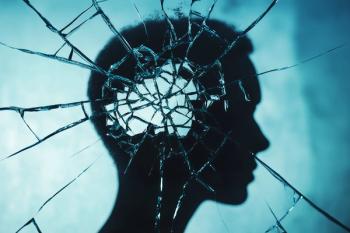
Subtle Nuances in Diagnosis of Schizophrenia
An analysis of symptom severity across domains may enable us to reevaluate how we categorize symptoms within the spectrum of psychotic illness.
Now in its fifth edition, DSM has served as our guide to identifying, communicating, and guiding treatment for the great variety of psychiatric illnesses with which our patients have been afflicted. Among our core principles is to treat the patient and not necessarily the diagnostic label or radiological or laboratory findings. Although looking at both a patient’s symptoms and the diagnostic label that best describes his or her clinical picture in tandem generally improves clarity and treatment planning, this doesn’t always happen to the degree we would like.
For example, over the last 4 years of my residency (we began training under DSM-IV), the overwhelming subtype of schizophrenia I encountered was “chronic undifferentiated.” over the last 4 years of residency, the The utility of this diagnostic label is questionable given the vast differences in presentation of signs and symptoms among this diverse group of patients. In large part, this is why we no longer find this model of classification in DSM-5.
My first impression of this change was that things had been simplified for the better. However, I was taken aback when I came across the specifier for “current severity” for which we are to refer to the Clinician-Rated Dimensions of
I) Hallucinations
II) Delusions
III) Disorganized Speech
IV) Abnormal Psychomotor Behavior
V) Negative Symptoms
VI) Impaired Cognition
VII) Depression
VIII) Mania
I felt as if we might be moving backwards and rigidly categorizing this impressively heterogenous group of patients.
Dr Rajiv Tandon’s talk on Advances in Diagnosis and Phenomenology at
For instance, a patient who reducted symptom severity in the domains of hallucinations, delusions, and depression but who does not show as impressive an improvement in the domain of cognition might lead the clinician to reevaluate the medications for the possibility of anticholinergic adverse effects or more closely examine quality of sleep, etc. If no cause for impaired cognition can be found, the clinician can move on to pursuing appropriate treatment avenues to optimize cognitive function.
Likewise, particularly in our case as resident physicians in which we often cover for each other during post-call days, if this information is available for our review, we have a better idea of relative treatment progress as well as heightened vigilance for areas of poor response. This information is crucial for making treatment plan modifications to address the specific needs of the individual patient optimally. These “numbers” now begin to feel less cold and rigid.
During related talks throughout the conference, the heterogeneity of the disease known as schizophrenia was referenced repeatedly. The talk given by Dr Matcheri Keshavan highlighted cognitive dysfunction among this patient population. The discussion included concepts such as the Redox theory, cellular membrane and mitochondrial dysfunction as possible underlying mechanisms, but more pertinent to our discussion, the theoretical existence of identifiable cognitive phenotypes. This led into the proposition of re-thinking how we categorize patients within the spectrum of psychotic illness.
Our current model focuses on 3 main diagnoses: schizophrenia, schizoaffective disorder, and mood disorders with
While shifts in conceptualization of disease pathology, diagnosis, and treatment take time to demonstrate validity, these discussions encourage us to continually question the basis of our medical decision making, to keep in mind the big picture, and to focus on the intimately unique needs of each individual patient.
Disclosures:
Dr Prabhu is Chief Resident in the Department of Psychiatry and Neuroscience at Detroit Medical Center/Wayne State University.
Newsletter
Receive trusted psychiatric news, expert analysis, and clinical insights — subscribe today to support your practice and your patients.















